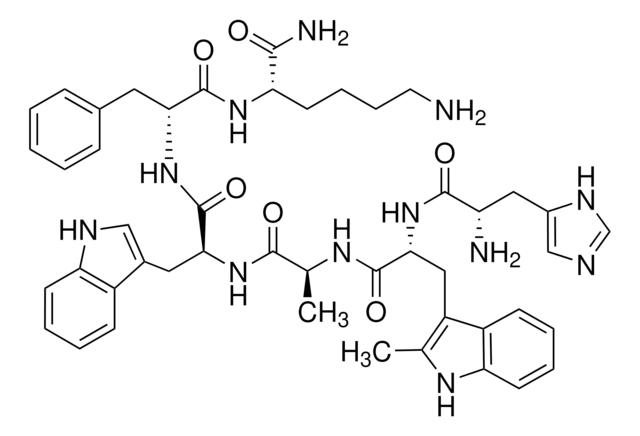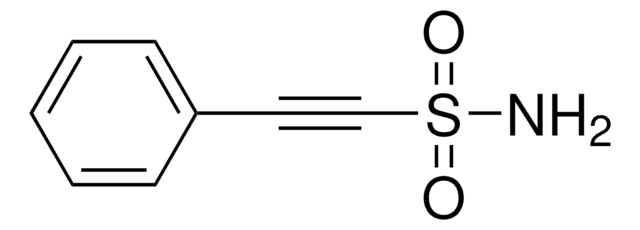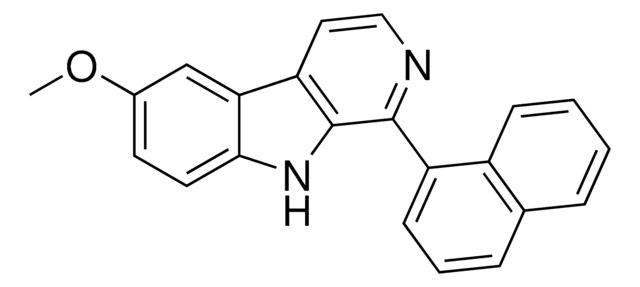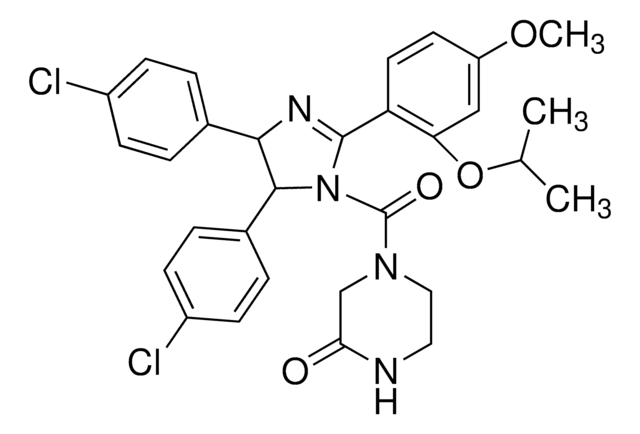P4359
Pifithrin-α
≥95% (HPLC), powder
Sinónimos:
2-(2-Imino-4,5,6,7-tetrahydrobenzothiazol-3-yl)-1-p-tolylethanone hydrobromide, PFT-α
About This Item
Productos recomendados
assay
≥95% (HPLC)
form
powder
storage condition
protect from light
color
off-white
mp
192.1-192.5 °C (lit.)
solubility
DMSO: 20 mg/mL
shipped in
wet ice
storage temp.
−20°C
SMILES string
Br[H].Cc1ccc(cc1)C(=O)CN2C(=N)SC3=C2CCCC3
InChI
1S/C16H18N2OS.BrH/c1-11-6-8-12(9-7-11)14(19)10-18-13-4-2-3-5-15(13)20-16(18)17;/h6-9,17H,2-5,10H2,1H3;1H
InChI key
HAGVCKULCLQGRF-UHFFFAOYSA-N
Application
- to study the effect of specific p53 inhibitor on p53-upregulated modulator of apoptosis (PUMA) expression after transient global cerebral ischemia (tGCI)
- as p53 inhibitor to treat PA1 cells
- as a tumor protein p53 (TRP53) inhibitor, to treat mouse lung epithelial-12 (MLE-12) cells
Biochem/physiol Actions
Features and Benefits
Storage Class
11 - Combustible Solids
wgk_germany
WGK 3
flash_point_f
Not applicable
flash_point_c
Not applicable
ppe
Eyeshields, Gloves, type N95 (US)
Elija entre una de las versiones más recientes:
¿Ya tiene este producto?
Encuentre la documentación para los productos que ha comprado recientemente en la Biblioteca de documentos.
Los clientes también vieron
Artículos
We present an article about how proliferating cells require the biosynthesis of structural components for biomass production and for genomic replication.
Contenido relacionado
n proliferating cells, the cell cycle consists of four phases. Gap 1 (G1) is the interval between mitosis and DNA replication that is characterized by cell growth. Replication of DNA occurs during the synthesis (S) phase, which is followed by a second gap phase (G2) during which growth and preparation for cell division occurs. Together, these three stages comprise the interphase phase of the cell cycle. Interphase is followed by the mitotic (M) phase.
Apoptosis, or programmed cell death (PCD), is a selective process for the removal of unnecessary, infected or transformed cells in various biological systems. As it plays a role in the homeostasis of multicellular organisms, apoptosis is tightly regulated through two principal pathways by a number of regulatory and effector molecules.
Nuestro equipo de científicos tiene experiencia en todas las áreas de investigación: Ciencias de la vida, Ciencia de los materiales, Síntesis química, Cromatografía, Analítica y muchas otras.
Póngase en contacto con el Servicio técnico









